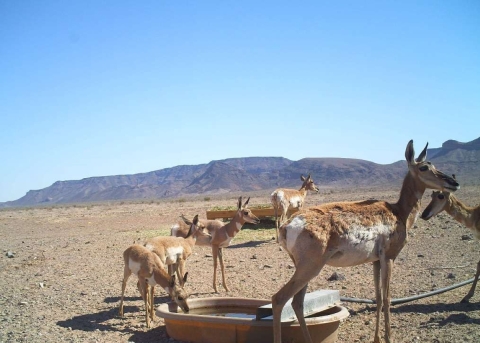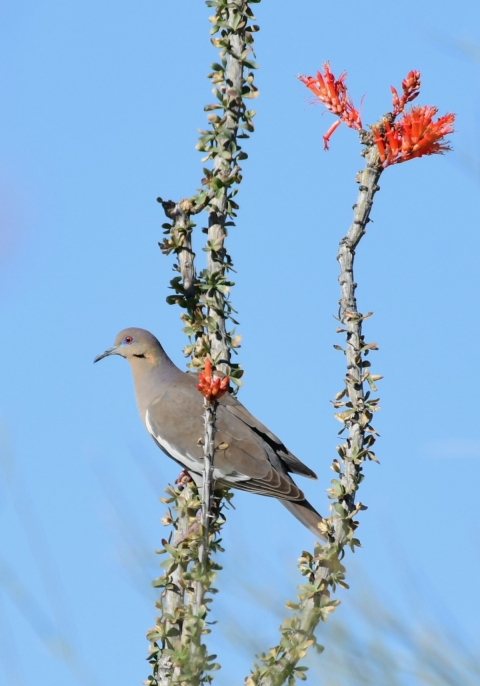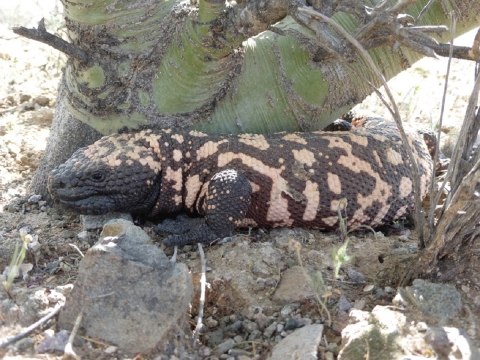Seasons of Wildlife
Spring and Fall: Desert bighorn sheep, Sonoran pronghorn, mule deer, migrating warblers, flycatchers, and swallows.
Winter: coyote, javelina, Costa’s and Anna’s hummingbirds, resident birds such as Gila woodpecker and elf owl.
Summer: Chuckwalla, side-blotched lizard, Gila monster, and other lizard species. Other reptiles including snakes and desert tortoises may also be seen.
Featured Species
A genetically distinct subspecies of pronghorn, the endangered Sonoran Pronghorn’s smaller size and light coloration are adaptations to life in the desert. When startled, these shy creatures can run at speeds up to 60 miles per hour, making them one of the fastest mammals in North America. In 2002, the Sonoran pronghorn population dwindled to an estimated 21 individuals.. Concerned biologists and private entities partnered with U.S. Fish and Wildlife Service to bring the Sonoran pronghorn back from the brink of extinction. Today, conservation efforts continue to ensure the long-term survival of these unique desert residents.
Mammals
Over 40 species of mammals are found on the refuge. Bats, squirrels, mice, rats and gophers make up the majority of mammal residents. Most of these warm-blooded animals have physical or behavior adaptations to help cope with life in the harsh desert. Some species are light in coloration to deflect the sun’s heat, while others have adopted a nocturnal lifestyle. Extreme efficiency in conserving water is a common adaptation in desert mammals – some can even survive without drinking any water, extracting what little they need from the plants they eat.
Birds
During the spring and fall, numerous species of warblers, swallows, and flycatchers migrate through the refuge, where they are able to locate food and shelter among the desert vegetation. Some birds are year-round residents, such as the elf owl and the Gila woodpecker due to fluctuations in weather and suitable habitat, bird populations throughout the refuge are extremely variable. Common birds on the refuge include raven, white-winged dove, Gambel’s quail, western screech-owl, and Costa’s hummingbird.
Land reptiles
The hot, dry climate of the refuge is ideally suited to the needs of cold-blooded reptiles. Generally, the region experiences 90-100 straight days of 100 °F from June to October. Over 15 species of lizard and 20 species of snake are found on the refuge, including the venomous Arizona coral snake. Cabeza Prieta also provides habitat for a multitude of insect species, including various native bees.



